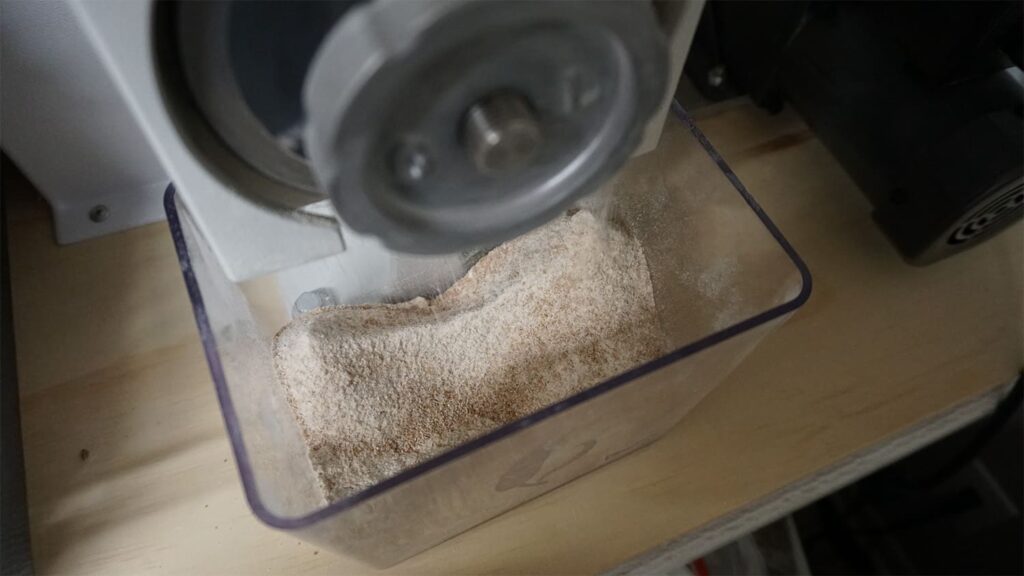I love bread. That’s why I started this website.
But, growing up in the United States, I’ve seen bread bastardized by food companies, turning healthy and nutritious foods that people groups from all over the world have enjoyed for generations into self-stable, bad-for-you, flavorless food products.
We’re now seeing true health experts (not the ones bought and paid for by the food companies) beating the drums, saying that grain-based food is not good for you. And rightly so.
Our breads of today look and taste nothing like the breads from 200 (or 2000) years ago. And it’s killing us.
We need to make whole grain fermenting and baking common again.
The problem of modern day grains
Commercially milled foods remove all of the good parts of the grain (the bran and germ), leaving only the endosperm. If you buy “all-purpose flour” at your local grocery store, you’re buying flour made from the endosperm.
Another problem is most grain is commercially farmed. Grain used to be grown locally using animals and rotational grazing practices, milled locally, and then baked into bread in homes. With the Industrial Revolution, this all changed. We now have massive grain fields, large commercial mills and bakeries, and people buy their bread at the grocery store. In order to have a reliable supply of grain, these farms rely on chemical fertilizers and chemical weed sprays such as Roundup (glyphosate).
And the final big problem is the lack of fermentation and sprouting. The food industry doesn’t have time to soak and sprout grains or wait for the grains to ferment. Instead, they use instant yeast to create light and fluffy bread. And although I love to use instant yeast in some of my recipes, fermenting bread (which we call sourdough here in the U.S.) changes the way our body digests wheat.
Why do they remove the bran and germ?
To make grain products shelf-stable
When stored properly, a whole grain can last indefinitely. But, once a grain is ground into flour, the clock starts ticking. It can quickly become rancid. Depending on the grain, this can happen in as short as five weeks (rye) or as long as nine months (hard red wheat).
You can’t grind grain, make a product, get it to distributors across the country, then to grocery shelves, and finally to a pantry in a home in enough time. To prevent the food from going rancid, they leave only the endosperm, which is mostly carbohydrate, allowing for shelf-stable products to last years not weeks and months.
To make more money
If you have a single grain and you use to make a product, you make it (1) profit. But if you separate the bran, endosperm, and germ, you can use (or sell) each part to make three things, therefore making (3) profits.
Why are commercial fertilizers and weed-killers used?
It’s cheaper
Rotational grazing practices (pioneered in today’s world by Joel Salatin of Polyface Farms–his books are excellent if you would like to learn more about this) require the use of animals. This makes sense, right?
When we used to be agricultural communities who grew their own food, we’d use animals to fertilize our land, then use the land to grow grass to feed the animals. This symbiotic relationship ensured success.
To enable large farms to grow lots and lots of wheat
Rotational grazing doesn’t scale well. The grain these large farms grow is so substantial that chemical fertilizers are needed to feed the soil and since the microbiome of the dirt is so messed up, they then need chemical week-killers to get rid of weeds.
There are so many resources out there to educate yourself on why these chemicals are harmful for our bodies.
Why don’t we ferment?
It’s too slow
In business, time is money. Fermented breads or using sprouted grains to make bread are long, laborious, and quite often can fail. And each loaf you make it always slightly different than the one before.
It’s much cheaper to use instant yeasts, stabilizers, and preservatives to ensure that they bread can turn out exactly the same every time.
It’s too expensive
If you’ve ever made sprouted or fermented bread you know how time consuming it is. Or maybe you have purchased artisan bread from a baker–then you also know how expensive it is to buy.
Over the last 100 years, American’s have been “trained” to buy white bread with the germ and bran removed at a cheap price from their local grocery store. To try to switch them to expensive or time-consuming bread made at home or from a local baker, they would balk.
These food companies are giving us exactly what we think we want.
Three rules to follow to ensure your grains are healthy
When I talk about “whole grains” on CommonGrains.com, what I am referring to is a whole grain that keeps these three rules:
- Use grain free from modern pesticides, such as Roundup (glyphosate). Buying organic grain really is worth the extra cost
- Keep 100% of the bran, germ, and endosperm together as a true whole grain
- Make slowly with minimal ingredients. Use techniques such as sprouting, soaking (a must for using 100% whole grains, as they absorb water slower), fermenting (sourdough) or all while minimizing the use of any processed ingredients
It’s not easy to follow these rules, but that’s why I’m here. I want to help you make eating grains common again and a part of your busy life.
Grain has so much nutrients, minerals, fiber, and healthy carbohydrates to offer you and your family. It just takes a bit of un-learning and relearning to get there.








